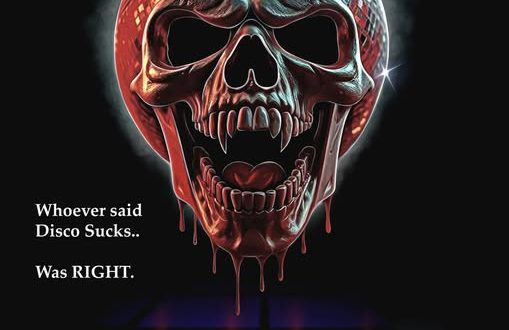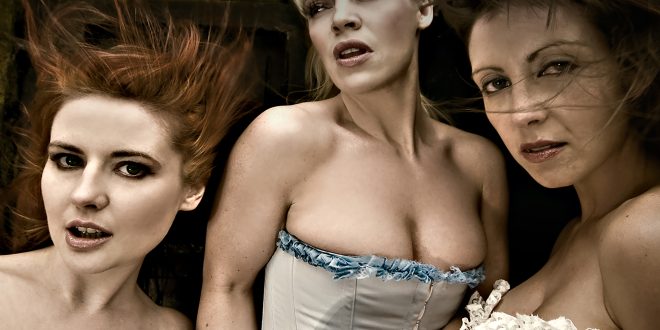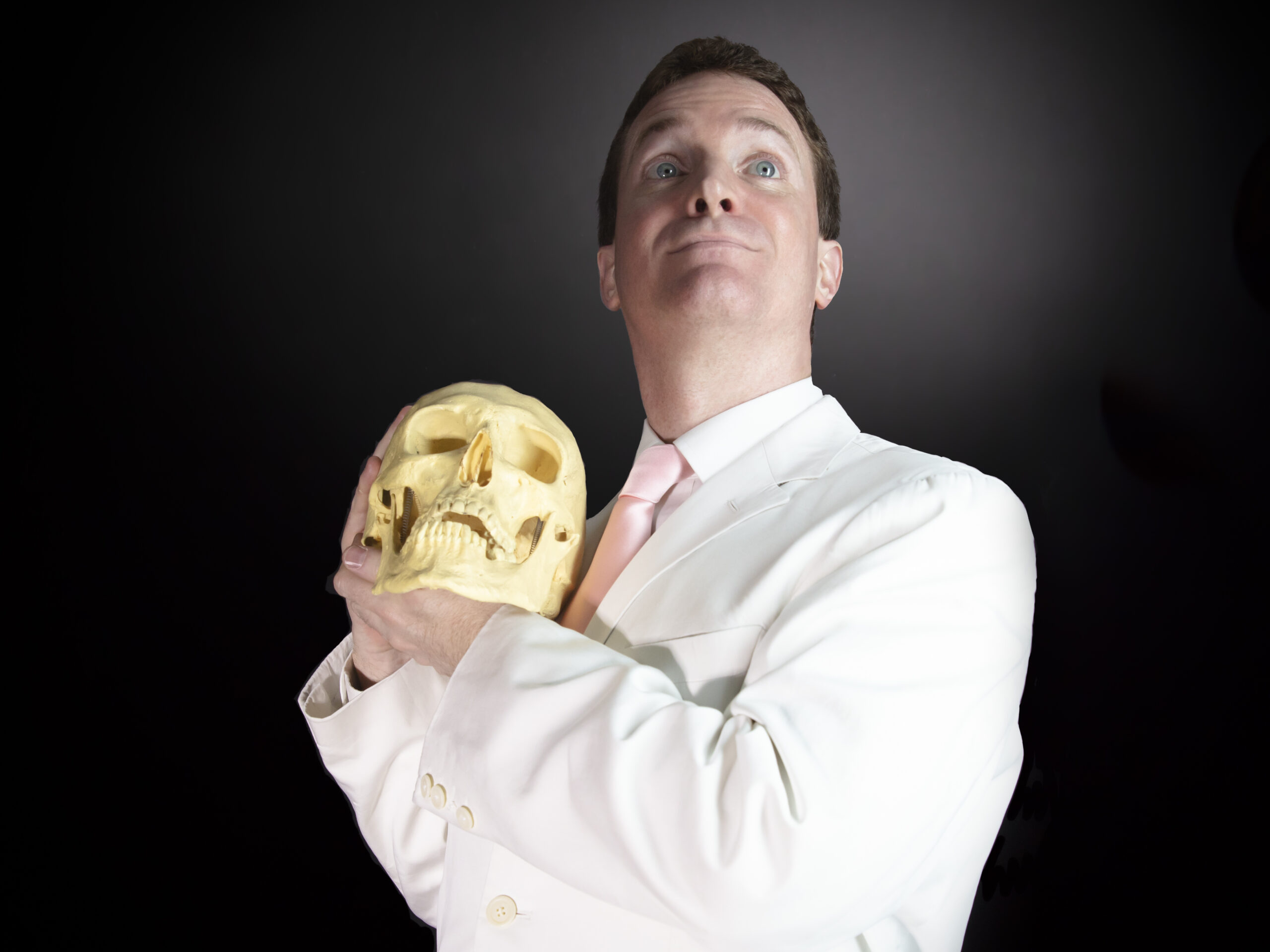
Typically, when a movie is a box office smash, that means that it makes a ton of money. But for the legendary stars of Godzilla x Kong: The New Empire, they mean it in a much more literal sense.
As audiences around the world watch these icons of the silver screen reunite for director Adam Wingard’s second MonsterVerse movie, many are likely looking to know more about this massive blockbuster. Luckily, Daily Dead was able to speak with the filmmaker ahead of the sequel’s theatrical release to pull back the curtain on a few details surrounding the Titan tag team turmoil.
In the first part of our interview with Wingard, he discussed how his corner of this cinematic universe was largely inspired by the toys of the 1980s. Not only did this apply to the overall look and feel of the marketing materials or the characters, but it also extended to Hollow Earth, the mystical yet grounded world located in the center of our own that the mighty Kong calls home.
Adam Wingard: In the last movie, Godzilla vs. Kong, we had a quick fly through Hollow Earth. But in this film, we really get to live in it and experience all the different places and environments that it has. What’s cool about Hollow Earth is it’s this prehistorical place. It’s almost like traveling back in time and there’s so many different environments. In this film, we get to explore lots of them. We use Iceland as a base for real plate photography. It was always important. No matter how big and crazy and outlandish we got, we always wanted something to ground it. It was very important that we try to use as [much] plate photography as a starting point as possible.
On the surface level, we got to really go to town with seeing different aspects of Monarch and the bases. Again, going back to that influence I had as a kid. The way that toys really spoke to me and built my creativity up. I wanted to create environments that… gives you the feeling almost like a toy set, but then you get in close and you see the chipped paint, you see the dirt. It’s real. And that’s sort of what this film is all about in a way. It’s trying to take these big, stylized ideas and then make you believe it and show you something you’ve never seen before. But you can’t just do something that’s obviously just crazy for crazy’s sake because that’s easy.
Although audiences got a glimpse into Hollow Earth back in 2021, Wingard and company needed to explore other angles in order to show us something we’ve never seen before. That’s where Bryan Tyree Henry’s character Bernie Hayes comes in. Since he spent the last movie holding down the fort on the surface world with Millie Bobby Brown’s Madison Russell and Julian Dennison’s Josh Valentine, a trip to Hollow Earth would be a completely new experience for him. And for that experience, the director took some inspiration from his own lived experience.
Adam Wingard: That’s one of the only lines that I actually put in the movie. “I’m turning into water.” Because I’ve had that experience on psychedelics before. I think I’ve actually said that before. You can only come up with a line like that from real experience.
But it’s almost like this one’s like almost a spoof of [Godzilla vs. Kong] because it’s dead serious the last time when they’re flying in there. And it was fun to be like, “Well, what’s it like when Bernie goes through it?” So we played it from his perspective. It’s almost very similar shot for shot from the last movie, but it’s a completely different feel. One thing that we did do differently was some of the close-ups, especially of Bernie and Trapper. There’s these straight on shots and they’re just totally crazy looking. And it’s because the camera crew rigged up these mirrors pointing towards the actors that we were filming in it and then they vibrated the mirrors, [which] creates almost a double image. It’s different than if you just vibrated the camera, you know, because that’s what we did in the first one. We just kind of vibrated the camera. But when you add that layer of the mirror, it creates a crazy effect. It’s like when you look in your car window and you have heavy bass and it [vibrates]. It’s really cool to see, you know?
Speaking of lived experience, more of Wingard’s life came into play when it came to the opening of The New Empire. Previously, this iteration of Kong was established as a John McLane-type of 80s action hero. He even had that Lethal Weapon 2 moment in the last film with his shoulder. But like Roger Murtaugh, Kong does his best despite nagging ailments catching up with him. And just as Dan Stevens’ kaiju veterinarian Trapper helps the massive ape with his dental issues, Wingard addressed his own tooth situation in his latest film.
Adam Wingard: The toothache thing came from when I was doing “You’re Next” years ago. I had a really bad toothache during the whole course of that movie and it didn’t go away. And even during post-production, it still was there. I’d go to all these dentists and they couldn’t figure it out. Eventually, they figured out this surgery that they had to do to my gums or something to get the pain stopped. But I spent all this time with this tooth pain. This movie was sort of like a cathartic kind of thing. You’re also trying to find something that we can all relate to [like] going to the dentist, but put it on a big, absurd, 300-foot-tall scale. That was actually one of the first things that I knew I wanted to do with this film as well.
Along with eulogizing his tooth pain, Wingard also planned Trapper’s introduction as part of this whole ordeal fairly early on in the writing process. But originally, Stevens’ first appearance onscreen came with a lengthy monologue. But after the star of Legion, Beauty and the Beast, and The Guest got his McConaughey on and improvised some finger guns, the team decided that it was better to show the audience rather than tell them what this character is like. And considering the amount of non-verbal storytelling Wingard had been doing in this universe already, that seemed like old hat for him. Instead, the more challenging part turned out to be the climax of the movie which features one hell of a slobberknocker when Scar King brought out his big guns to even the odds against Kong and Godzilla.
Adam Wingard: That was my number one goal going into this, doing this nonverbal visual storytelling. I just knew from my experience of working on the last film that Kong doesn’t have to do a lot and you understand everything that’s going on with him. Even just a little sneer, you know? That was the thing that was easiest to come together in some ways because that was like the number one focus. The second sequence we did was Suko and Kong, the one where they go to the lake and they bond for the first time. That was a great thing to start with because that sequence has the most interactions between monsters. He and Suko really get to know each other in that scene. And the VFX team was just so great. Alessandro Ongaro, he’s the VFX supervisor. He just really got that and was really excited to do it.
The hardest part was really the Rio action. Action’s not that hard to do when you come to this because when you have stuff for them to do, you always have a focus. For instance, that first scene with the apes fighting Kong where they jump him and stuff. But the ending was difficult because you got all four of the monsters. You got to make this satisfying tag team [match]. You got to try to remind people of the scale as much as possible without getting too in the weeds with it. That one was the most challenging [parts] because it just had to be satisfying.
Like in the last film, we had Mechagodzilla, who’s obviously a robot, right? But killing him was really fun because we could do a samurai bloody death scene without it being bloody, because Kong chops him up and he’s bleeding oil everywhere. So it allowed us to do this visceral, almost gory sequence. But with Scar King, you hate Skaar King. Yeah he’s bad. But if you started eviscerating Scar King, you’d have some kids running out. We found it eventually with this ice thing.
It felt very “Mortal Kombat.” It was a great fatality.
Adam Wingard: Yeah, “Mortal Kombat” always finds a way in.
[Editor’s Note: Make sure to check out Part One of our interview with Adam Wingard!]





























